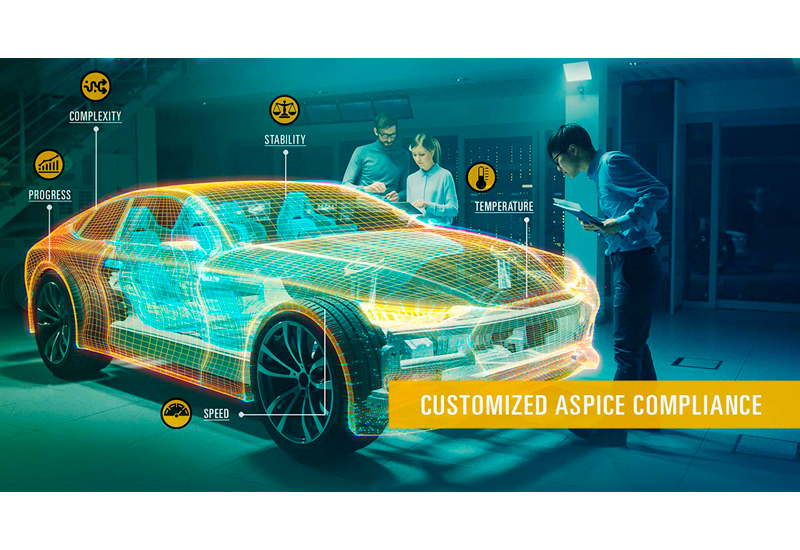How to optimize your operational excellence by working on ASPICE

CENIT Whitepaper for decision makers in automotive industry
Do you see Automotive SPICE as no more than a bureaucratic annoyance? Then it might be worth your while to take a fresh look at this mandatory quality assurance standard: A proactive approach to Automotive SPICE compliance gives you the opportunity to professionally bench-test your specific processes, methodologies and organizational structures – and the chance to adapt them accordingly. A competent partner can help you attain the required conformity standards quickly, taking your internal and external specifics into account and efficiently boosting benefit potentials for your individual path to digitalization.
Technical innovation is arriving in our cars at an ever-increasing rate. E-mobility and electric drivetrains are heading a massive wave, but features like distance controllers and parking assistance systems, camera-based mirrors and collaborative online apps have major effects as well.
That’s the good news. However, this innovation surge also means that the complexity of the automotive industry will continue to grow: Virtually no system, assembly or individual mechanical component can now be viewed in isolation, because everything is or might somehow be connected to something else. And this “somehow” has already caused plenty of problems for the automotive industry in the past.
In 2001, the Automotive Special Interest Group (AUTOSIG) therefore began formulating the Automotive SPICE quality standard (“ASPICE”), with the first version being issued in 2007. AUTOSIG has nearly all mayor car makers on board and therefore the core clientele of the supplier industry in the automotive business.
In its section on Engineering Processes & Domains, the initial version of ASPICE focused on the development of system/software components of control devices.
The current third iteration, which can be expanded to include modules such as “Mechanical SPICE”, also requires ASPICE conformity for pure hardware and mechanical components.
What does this mean for processes on the ground? What implications does ASPICE have for suppliers? How do we handle ASPICE requirements as digitalization continues to spread? Is ASPICE just another burden? Or can the goal of ASPICE compliance even increase competitiveness?
In a CENIT Whitepaper we explain the need for an ASPICE-conformant approach throughout classic business processes, its close relationship with the V Model and – importantly – how it can be used to achieve competitive benefits despite or because of growing digitalization within the automotive industry.
Also, correct interpretation and need-based use of the ASPICE plug-in concept for the engineering processes can create direct connections to your specific portfolio and organization.
CENIT Whitepaper "Customized ASPICE Compliance" - chapter overview
- V Model, ASPICE and digital twin
1.1 ASPICE and the V Model - The status quo in the automotive supply chain
- The ASPICE plug in concept
- Approaching solutions
4.1 Practical examples
4.2 ASPICE compliance levels and implementation
4.3. Dos & Don’ts - Reaping the benefits of ASPICE compliance with support from CENIT